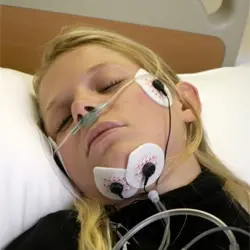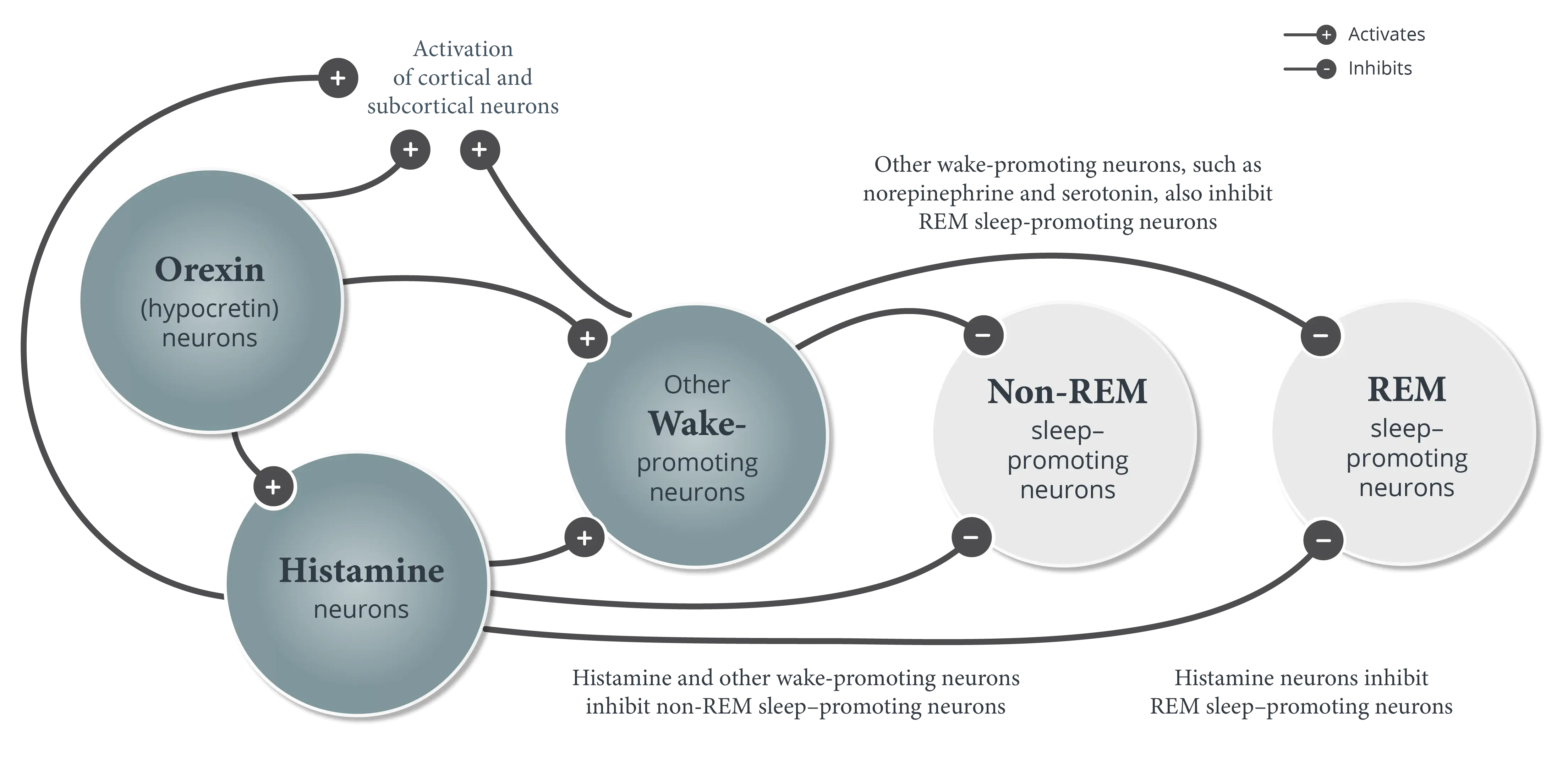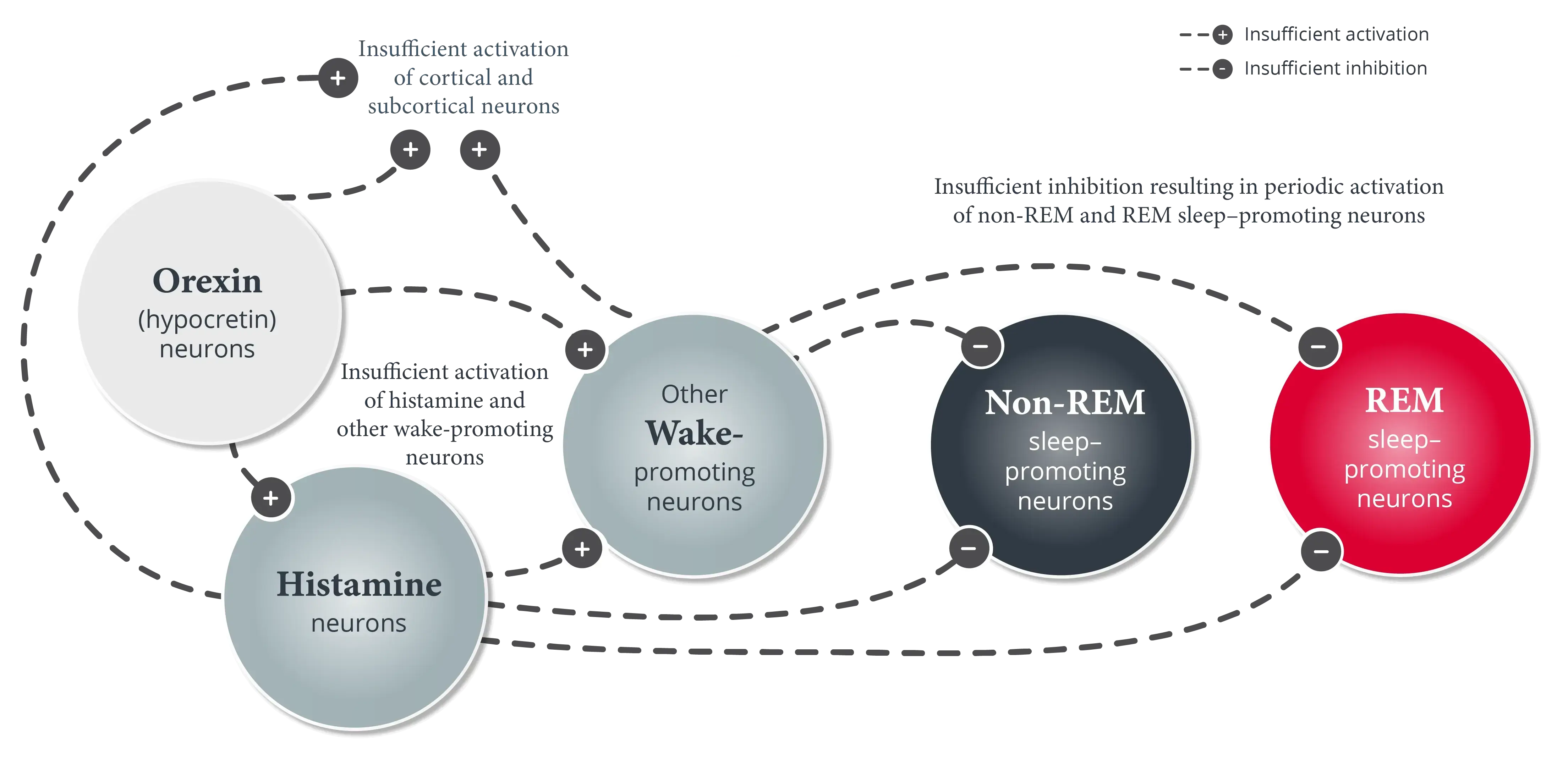

Symptom Manifestations in Pediatric Patients With Narcolepsy
This content was developed using “Clinical features and diagnosis of narcolepsy in children,” published on UpToDate (2024), and other materials.
Symptom Manifestations in Pediatric Patients With Narcolepsy
This content was developed using “Clinical features and diagnosis of narcolepsy in children,” published on UpToDate (2024), and other materials.
Overview
The symptoms of narcolepsy can manifest differently in pediatric patients than they do in adult patients.1
Excessive daytime sleepiness (EDS) is the primary symptom of narcolepsy and is present in all patients.1,2 Children may start to be affected by EDS as early as 5 to 6 years of age, but some start as early as preschool age.2
EDS may manifest differently among patients, ranging from drowsiness that comes and goes to irresistible, unintended lapses into sleep (sleep attacks)1,2:
- Pediatric patients may appear irritable, inattentive, or hyperactive due to sleepiness1,3
- In younger children, these manifestations may be misinterpreted as behavioral problems or attention-deficit/hyperactivity disorder (ADHD), whereas in adolescents, it may be written off as due to hormonal changes or puberty3
- Memory lapses and complaints of fatigue or lack of energy may occur1
- The need for habitual napping may be present, even the return of previously discontinued naps in older children2,3
Sleepiness is more likely to occur in sedentary, boring, and monotonous situations that do not require active participation, such as sitting in a classroom, reading a book, or being driven in a car.1,3 EDS may also cause patients to perform routine tasks without awareness or recollection, called automatic behavior (eg, a brief episode of sloppy or unintelligible handwriting).1,2
Prepubescent children may have longer, more constant sleep attacks due to EDS, whereas adolescents may take less frequent, shorter naps during the day.3
Pediatric patients with narcolepsy type 1 (narcolepsy with cataplexy) may begin experiencing cataplexy at the same time as EDS, or shortly thereafter.1,2 It can be severe during disease onset and can manifest differently than in adult patients.1
Cataplexy typically manifests as muscle weakness in the face, neck, or legs and is usually triggered by strong emotions, such as those associated with laughter. Episodes are short, lasting a few seconds up to 1 minute, with consciousness preserved throughout.1
Pediatric patients may also experience cataplexy in different ways, including:
- Eyebrow raising, perioral movements, and head or trunk swaying2
- Cataplectic facies: Weakness involving the face, eyelids, and mouth with tongue protrusion that is not always triggered by emotion1,2
The frequency of cataplexy episodes varies among patients; some may experience more than 20 per day.1 Cataplexy may be more severe in prepubescent children than in adolescents.3
Young children with narcolepsy may present with atypical motor features that later evolve into more typical cataplexy.2
Many pediatric patients with narcolepsy experience disrupted nighttime sleep, frequently waking up for brief periods of time. They may also perform complex motor behaviors during REM sleep, such as vigorous dream enactment or slow, calm, repetitive movements that are pantomime-esque.2


*Video analysis conducted in 40 children (mean age, 11.8 years) with narcolepsy type 1 and 22 age- and sex-matched healthy controls.4
These complex motor behaviors were more common in those who also experienced impaired nighttime sleep, more severe EDS, and cataplectic facies.2
Because the diagnostic criteria do not contain information specific to pediatric patients, understanding how symptoms present is crucial to making an accurate diagnosis.2,3
References
- American Academy of Sleep Medicine. International Classification of Sleep Disorders. 3rd ed, text revision. American Academy of Sleep Medicine; 2023.
- Maski K, Kotagal S. Clinical features and diagnosis of narcolepsy in children. Clinical Decision Support | UpToDate | Wolters Kluwer. Updated July 29, 2024. Accessed January 6, 2025. https://www.uptodate.com/contents/clinical-features-and-diagnosis-of-narcolepsy-in-children
- Plazzi G, Clawges HM, Owens JA. Clinical characteristics and burden of illness in pediatric patients with narcolepsy. Pediatr Neurol. 2018;85:21-32.
- Antelmi E, Pizza F, Vandi S, et al. The spectrum of REM sleep-related episodes in children with type 1 narcolepsy. Brain. 2017;140(6):1669-1679.







